Brittany Powell moved from the Bay Space to Vermont in 2016, simply as wildfire smoke was changing into an everyday summertime prevalence in California. She watched in horror from afar as family and friends residing in her dwelling state fled wildfires made bigger and extra intense by local weather change-driven drought.
“You’re so fortunate you reside there,” they advised her. Powell thought so, too. The Northeast tends to have huge summer season thunderstorms and frigid winters, however it’s hardly ever beset by hurricanes, earthquakes, fires, or tornadoes — the cataclysmic pure disasters different components of the nation must navigate commonly. And, in contrast to close by New York, Massachusetts, and Connecticut — states the place acreage is a scorching commodity — Vermont, essentially the most rural state within the U.S., has ample open area.
After renting for a couple of years, Powell and her husband purchased an outdated farmhouse simply outdoors of the state capital Montpelier in 2019. Their city is understood for its filth roads, spring-fed wells, and old-school New England enchantment. When she moved there, Powell remembers pondering that it was the closest factor she’d be capable of discover to a spot secure from the consequences of local weather change.
Quickly, Powell could be coping with a set of points harking back to the state she had left behind.
In early 2020, as COVID-19 was spreading throughout the nation and many individuals started working from dwelling, middle- and upper-class People began buying and selling dense city areas for rural ones. Vermont cities whose populations hadn’t modified in 100 years, cities that the state was determined to fill earlier than 2020, had been startled by an inflow of latest residents. Deserted homes had been rapidly bought, renovated, and resold. The state’s housing inventory was completely gleaned, and the price of housing elevated near 40 p.c between 2019 and 2023.
As inexpensive housing grew to become practically inconceivable to return by, the homeless inhabitants grew. There have been rumors of touring nurses compelled to sleep in tents close to the hospitals they had been treating COVID sufferers in. Some firms hiring out-of-state candidates gave their new staff 12 months to maneuver to the state, to account for the tough housing market.
After which, final July, heavy rain began to fall on central Vermont — and saved falling. Flash floods swept throughout the state. Trickling rivers roared to life, swelled, and burst into the cities and cities clustered by their banks. Greater than 12 inches of rain fell on Montpelier that month, breaking a rainfall document set in 1989. The Winooski River, the artery that runs by means of the capital, crested to its highest level in near a century.
At 7 p.m. on the evening of July 10, as rain poured, Powell and her husband checked their basement and noticed that it was dry. Twenty minutes later, there was three toes of water in it. They didn’t comprehend it but, however the highway drainage culvert above their home had failed, sending a wave of water onto their property. They had been quickly plunged into darkness, as hundreds of consumers of their space misplaced energy. When the solar got here up and the flooding had receded, 6 inches of mud lined the flooring of their basement. Even with assist from their coworkers, associates, and neighbors, it took the couple weeks to scrub it out. The flooding ruined their HVAC system and required $25,000 in repairs. Powell’s home wasn’t in a flood plain, so she hadn’t purchased flood insurance coverage. However after months of filling out paperwork, she bought reimbursement from federal catastrophe reduction packages.
Brittany Powell
On July 10 this 12 months, a 12 months later to the day, one other bout of heavy rain flooded Powell’s home once more. The harm was simply as unhealthy the second time. The couple thought of shifting, however rapidly realized that the true property market had modified drastically since they’d bought their home in 2019. The price of shopping for a brand new dwelling apart, Powell, like a lot of her fellow climate-conscious Vermonters, doesn’t know the place she would go. “We thought we had been on this local weather change haven,” she mentioned. “You then understand that that doesn’t actually exist.”
Hearken to former President Donald Trump or Vice President Kamala Harris stump on the marketing campaign path, they usually’ll inform you that America has a housing disaster of epic proportions. It’s one of many solely points Republicans and Democrats in Congress agree must be mounted, and quick.
The issue dates again to 2008, when the Nice Recession triggered actual property builders to chop again dramatically on the variety of new properties they had been constructing. The speed of latest properties coming on-line has lagged ever since, including as much as a deficit of 3.8 million housing models throughout the nation as of 2020.
What’s extra, most of the cities the place People need to reside have strict zoning legal guidelines on the books that prohibit new developments and stifle the constriction of multi-family properties specifically. Whilst states have tried to make it simpler for builders to construct new properties, native governments and residents have conspired to cease the move of latest housing. In the meantime, as every part has develop into dearer over the previous half-decade, the price of constructing new properties has skyrocketed.

Now, excessive climate occasions are squeezing already-limited housing choices. Local weather change-driven disasters have been hitting the U.S. with extra depth over the previous quarter-century, creating tens of billions of {dollars} price of injury yearly, as international common temperatures climb. Final 12 months, 2.5 million People had been displaced, both quickly or completely, by excessive climate. And far of America’s current housing inventory will not be constructed to resist the results of local weather change, which signifies that tens of tens of millions of renters and owners are weak.
Local weather change isn’t the basis reason for America’s housing disaster, however it’s an erratic compounding issue that officers from the smallest cities in New England to the most important cities in California are being compelled to reckon with. This summer season alone, Hurricanes Helene and Milton quickly displaced tens of millions of individuals throughout the South and triggered lots of of billions of {dollars} price of injury to infrastructure, companies, and properties.
A 12 months out from the devastating flood of 2023, which killed two individuals and broken 4,800 properties and companies, Vermonters are confronting the tough actuality that excessive climate is shoving the state deeper right into a housing deficit. Vermont’s historic downtowns, clustered alongside the rivers that after served as important transportation corridors and supplied energy for mills and factories, are being drowned by the very arteries that after gave them life. “Folks need to keep in the neighborhood, however there’s a near 0 p.c emptiness price,” mentioned Lauren Hierl, a nonpartisan member of the Montpelier Metropolis Council. “When you’ve got an occasion just like the flood are available in that takes offline even 50 models, there’s simply nowhere for individuals to go.”
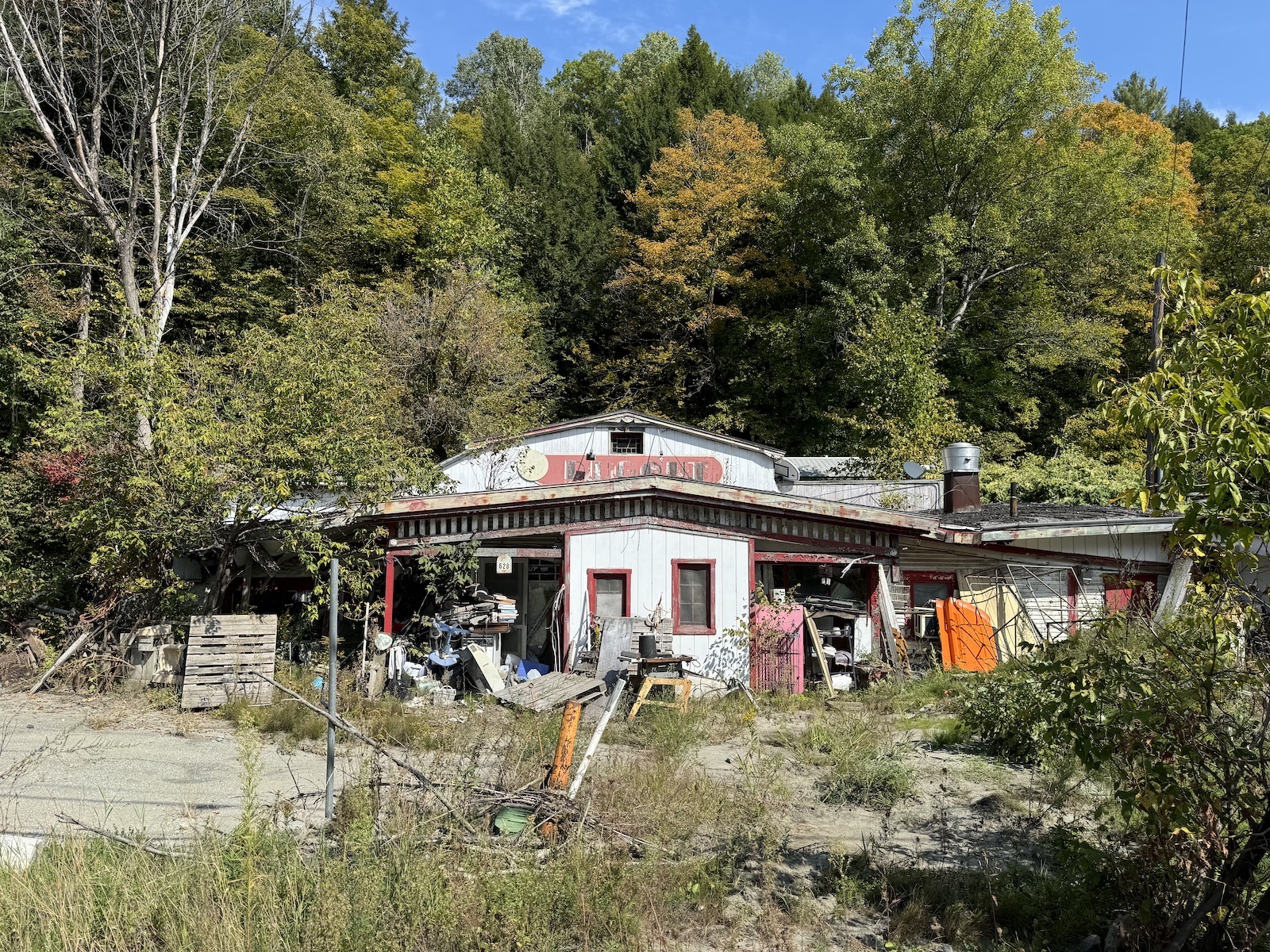
A current report carried out by Vermont housing officers discovered that Vermont must construct between 24,000 and 36,000 new properties by 2029 to accommodate its rising inhabitants. The price of constructing a small dwelling or house rose from $370,000 in 2022 to $500,000 a 12 months later. Half of renters within the state spend greater than 30 p.c of their earnings on housing — extensively thought of the brink between inexpensive and unaffordable.
Seth Bongartz, a Democratic member of the Vermont Home of Representatives, sees the housing scarcity in his state as a “little microcosm” of bigger nationwide housing and local weather traits. Bongartz not too long ago launched a invoice that makes it simpler for Vermont municipalities to approve new housing developments within the state’s most populated areas, the thought being that constructing denser housing the place facilities like fuel, water, and sewage exist already concurrently expands housing inventory and prevents sprawl into the state’s revered wilderness. The state’s Republican governor vetoed the invoice, however Democratic majorities within the state legislature overrode him, and the regulation was enacted in June. The loosened restrictions will assist jumpstart extra improvement, Bongartz mentioned: “It’s coming.” However so are extra floods.
In Vermont’s capital, metropolis leaders, nonprofits, enterprise associations, and tourism boards try to tackle town’s twin housing and local weather crises. They usually’re doing it with neighborhood enter. A sequence of public conferences held within the months after the 2023 floods, attended by lots of of involved residents, spurred the event of a brand new fee devoted to determining easy methods to defend town from the consequences of local weather change. Working alongside town council, the coalition is racing towards the clock to make Montpelier extra resilient earlier than the following heavy rainstorm.
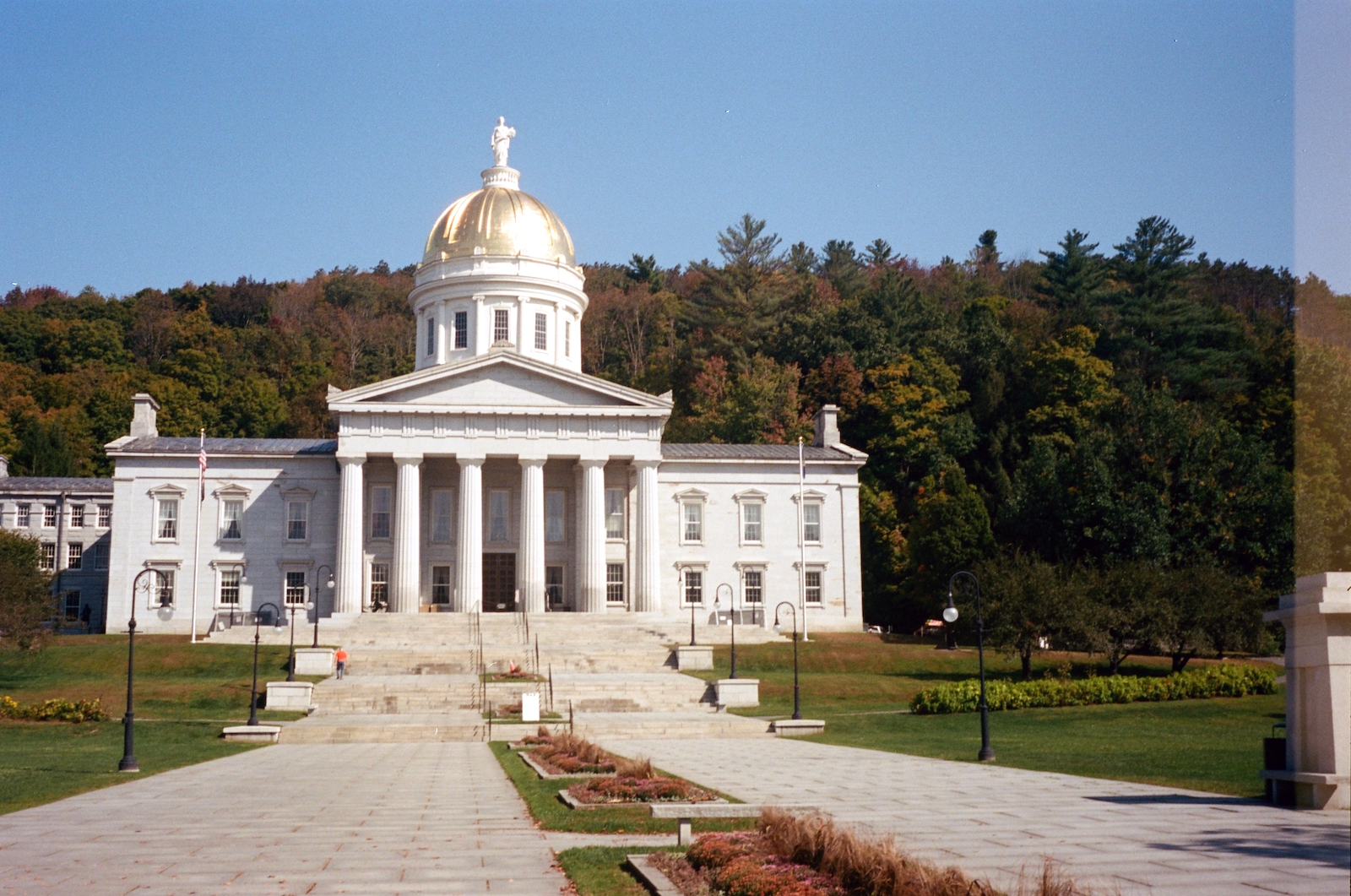
To the passing leaf peeper, hiker, or skier, Montpelier, the smallest state capital within the U.S., is the image of Vermont attraction. Brick homes line the Winooski River, which runs parallel to Foremost Road. Small companies sling lattes, pizzas, and secondhand flannels. The gold-domed capitol constructing, on State Road, stands sentinel over a metropolis that’s dwelling to only 8,000 residents.
However issues have modified because the occasion the Nationwide Climate Service dubbed the Nice Vermont Flood of 2023. Near 100 buildings within the capital, a lot of them companies, had been broken. Some outlets by no means reopened, and those that did are struggling to recoup losses from closures compelled by the catastrophe. The one federal publish workplace in Montpelier has been shuttered for greater than a 12 months, which means that residents of Vermont’s capital metropolis must go to a close-by city to mail their packages. On the far aspect of State Road, a mom is nonetheless tenting out together with her two teenage sons within the shell of their former home. A small variety of homes have been deserted completely — their homeowners are within the means of getting buyouts from the Federal Emergency Administration Administration, or FEMA, the federal authorities’s catastrophe reduction arm.
To these within the know, it’s apparent that the floods sparked the start of a precarious new period in Montpelier, one which has not but come into full focus.
Melissa Whittaker and her husband, Carlo, personal a pizza restaurant referred to as Constructive Pie in downtown Montpelier. On the morning of July 10, 2023, water began dashing into their basement sooner than that they had ever seen — and shortly, into the primary flooring, too. Maintaining the water out was futile; they needed to shut the restaurant and velocity dwelling earlier than the roads washed out. Once they got here again the following morning, Constructive Pie was completely wrecked. Prosciutto and mozzarella had been scattered on the ground in indistinguishable black piles. Within the basement, the wall separating their constructing from the neighboring constructing had been blown into bits by the drive of the water. Gobs of pizza dough hung like stalactites from the rafters.

Constructive Pie a couple of days after flooding destroyed every part inside the restaurant in July 2023.
Melissa Whittaker
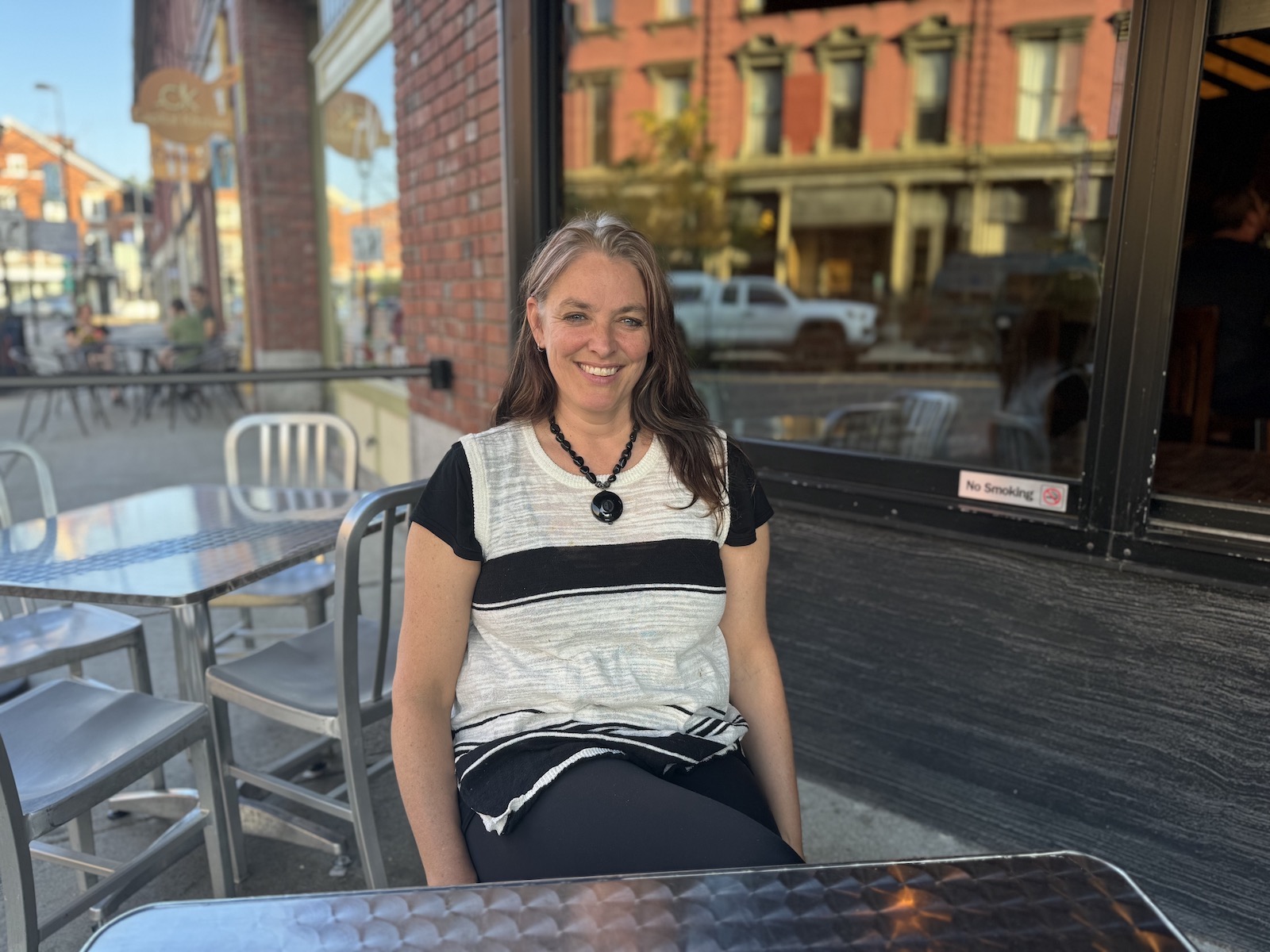
Melissa Whittaker sits in entrance of Constructive Pie in September 2024.
Zoya Teirstein / Grist
The federal flood insurance coverage that they had solely lined the primary flooring of the restaurant — the nationwide flood insurance coverage program doesn’t cowl basements in flood zones. With a view to reopen the restaurant, they wanted new flooring, partitions, plumbing, electrical wiring, and a mezzanine metal loft to retailer the products that they had beforehand saved downstairs. The upgrades and repairs value them $800,000 over the course of greater than 12 months. Melissa and Carlo bought a little bit over $100,000 from their insurance coverage firm and $200,000 from a Vermont state enterprise help program.
They utilized for a small enterprise mortgage from the federal authorities to cowl the remaining $500,000. The cash got here with an unthinkable value: their home as collateral. “If we go bankrupt, we lose every part,” Melissa mentioned.
Melissa and Carlo aren’t the one owners in central Vermont who’re one catastrophe away from homelessness. After extra floods hit the area this summer season, metropolis and state leaders are desperately looking for solutions to a query hundreds of different American communities, from Florida to North Carolina to California, are additionally struggling to deal with: How do you assist affected residents within the brief time period and put together for subsequent 12 months on the similar time? Two tasks underway in Montpelier trace on the magnitude of the problem forward.
Ben Doyle is president of the Preservation Belief of Vermont, a nonprofit group that works to safeguard outdated buildings and different heirlooms of Vermont’s lengthy historical past. In his spare time, he volunteers on the Montpelier Fee for Restoration and Resilience — an company that was created after the flooding final 12 months on the urging of Montpelier residents. Since he started volunteering, the fee has taken up nearly each spare minute he has. “I can’t coach basketball,” he advised me on a drive round Montpelier in September. “However I can do that.”
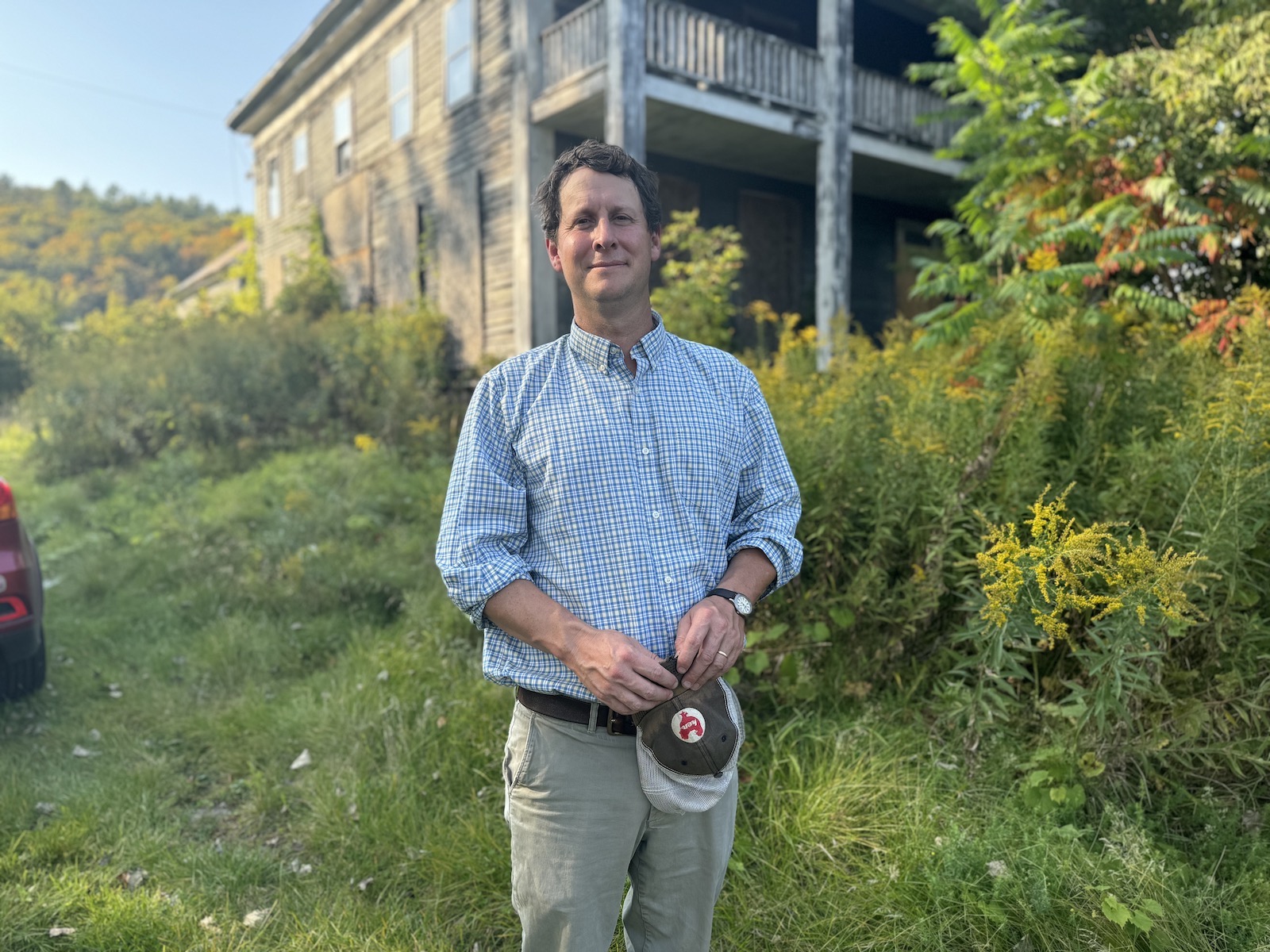
The Montpelier Fee for Restoration and Resilience was born of a sequence of well-attended public conferences, organized by three native organizations, that befell within the months following the 2023 flood. Paul Costello, a neighborhood with an uncanny knack for mediating powerful conversations, led the discussions. The conversations had been targeted on local weather resilience, Costello advised me: easy methods to construct higher communications and early warning methods forward of disastrous floods; whether or not town’s water remedy facility, which just about flooded, must be hardened; and, crucially, easy methods to direct water away from homes and companies downtown.
Lots of the roughly 1,000 individuals who attended the conferences had simply lived by means of their first climate-driven catastrophe and had been struggling to navigate the sluggish, bureaucratic, and complicated federal catastrophe reduction course of. Lower than 2 p.c of Vermonters had flood insurance coverage earlier than the floods hit.
The impact of the flooding on the state’s housing inventory was a scorching subject on the public conferences. Individuals who had by no means thought of shifting earlier than began wanting round for brand spanking new locations to reside and had been startled, like Brittany Powell was, to find that there was just about no inexpensive actual property to be present in your entire state. Addressing the multifaceted issues driving the housing scarcity in Montpelier, Costello mentioned, wasn’t one thing the conferences had been geared toward fixing, however the situation was inescapable. “It weaves by means of every part in our neighborhood,” he mentioned.
On the final of the conferences, greater than 300 individuals crowded into the auditorium of the native Excessive College. Its basement had been steeped in 4 toes of water simply months prior. Attendees got six blue stickers, which they might placed on greater than a dozen resilience tasks that they had give you over the course of the earlier two conferences. The preferred initiatives fell into three buckets: establishing an emergency response system, restoring the floodplain, and making a extra resilient downtown. Quickly after, town, in collaboration with two native nonprofits, formally established the Montpelier Fee for Restoration and Resilience, a bunch of 14 volunteers and one paid government director, which might be tasked with working in parallel with town to perform the objectives the neighborhood put forth.
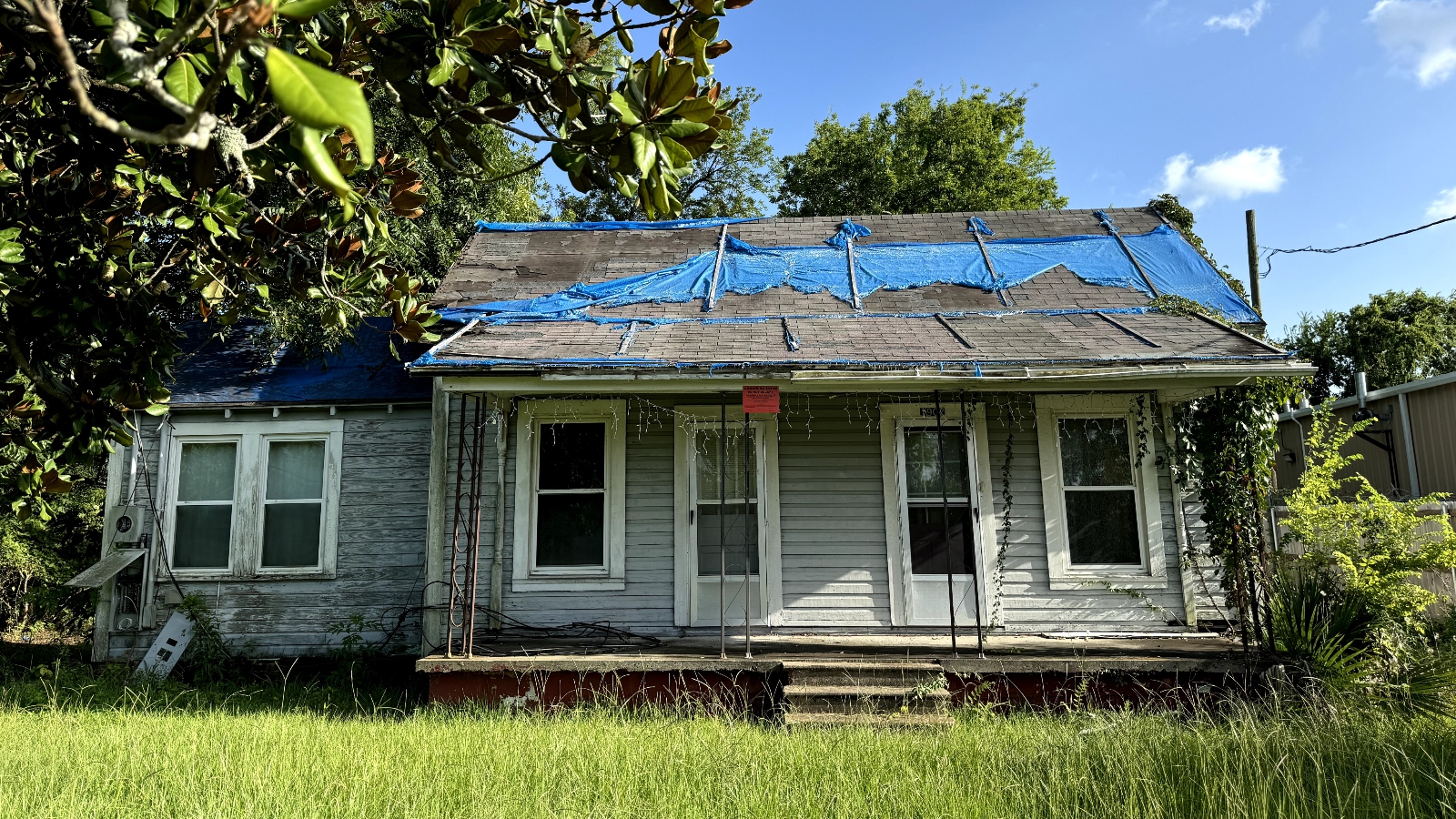
For the previous 12 months, Doyle has been making an attempt to make some of the vital of these directives — set up areas that may function big sponges for flood water round Montpelier — occur. The undertaking that’s closest to coming to fruition is known as 5 Residence Farm Manner, an 18-acre parcel and the location of a historic dwelling owned by the founding household of Montpelier. Doyle took me to the location, which the Preservation Belief, in collaboration with the resilience fee and town, goals to show right into a pure containment space that may maintain water that might in any other case move from the Winooski River into Montpelier throughout a flood occasion. If the Nice Vermont Flood hadn’t occurred, the decrepit home on the property might need been become a museum or the headquarters for a nonprofit. However after the rain fell final summer season, Doyle — who had devoted his profession to historic preservation — knew the home needed to go. “The concept of extra public funding going right into a constructing that’s not sustainable due to local weather change is a foul concept,” he mentioned.
Eradicating the home and making a channel connecting the property to the Winooski river will take roughly two years, Doyle mentioned, and the engineering research haven’t been accomplished but, which signifies that nobody is aware of precisely how a lot flooding in Montpelier will probably be averted by the undertaking. However as soon as it’s finished, 5 Residence Farm Manner will function pure flood safety for the city, hopefully stopping extra properties from being destroyed in future years. “The concept behind it’s that possibly it drops the floodwater in Montpelier down by six inches,” he mentioned.
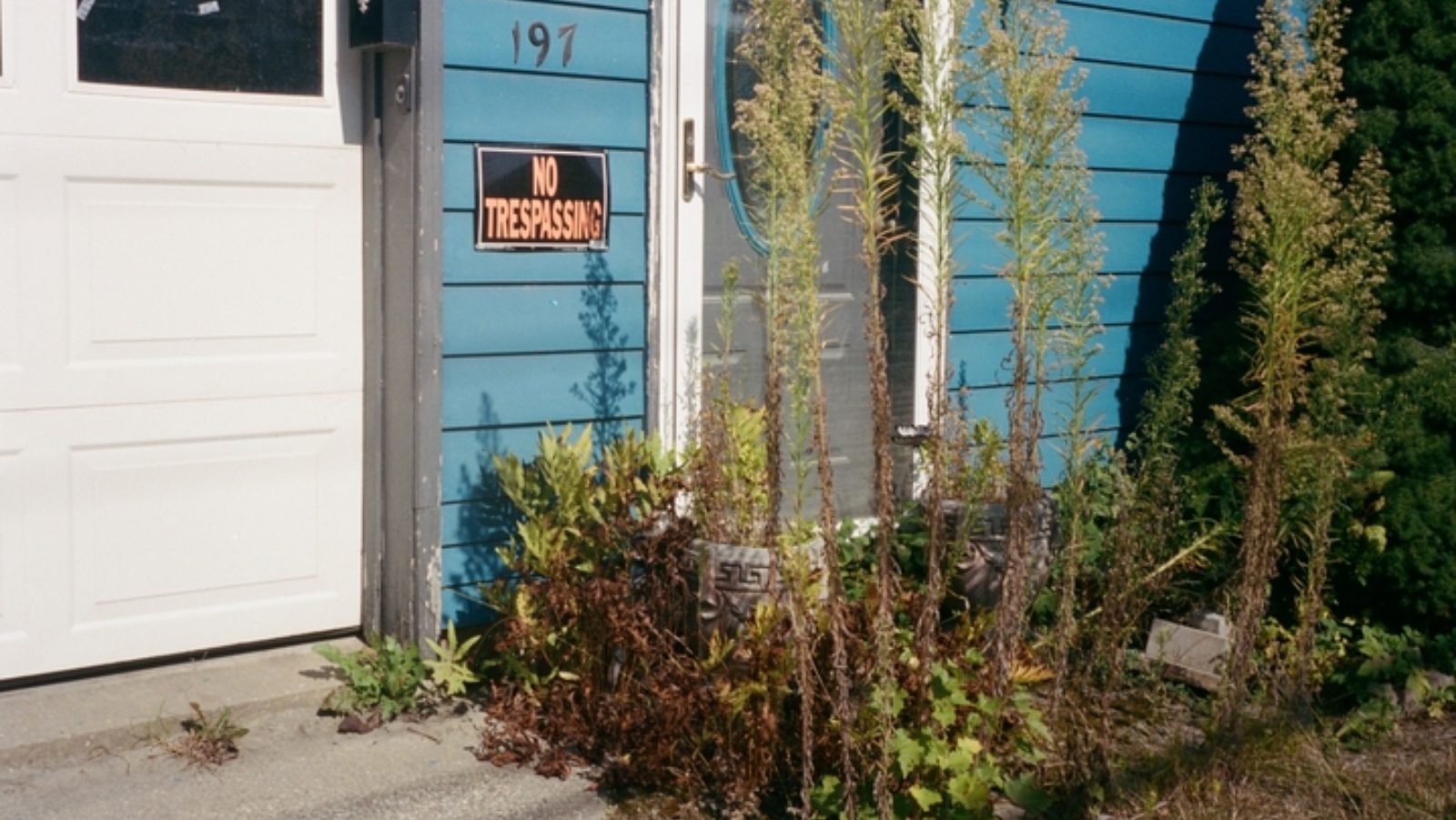
One of many deserted homes on State Road in Montpelier. The homeowners of the home are negotiating a buyout with FEMA.
Zoya Teirstein/Grist

A home alongside the river in downtown Montpelier that appears occupied however has been deserted for greater than a 12 months. There are various such homes within the metropolis.
Zoya Teirstein/Grist
Nonetheless, Doyle is aware of the size of the flooding to return can’t be stopped by a single, 18-acre parcel. “There’s a bunch of different parcels on this area that if you happen to might coordinate all of them and have all of it be floodplain restoration you’re beginning to truly do one thing,” he mentioned. “But it surely’s going to take like 20 of those tasks to make a distinction. That’s tens of tens of millions of {dollars} and many years of labor.”
Proper throughout the road from 5 Residence Farm Manner, town is embarking on a undertaking that tackles Montpelier’s local weather and housing predicament from the opposite route. There, the native authorities is constructing a brand new inexpensive housing improvement on the location of an outdated golf course previously owned by a fraternal social membership referred to as The Elks. For years, the Montpelier Metropolis Council hoped builders would purchase the vacant property and switch it into an inexpensive house advanced — one thing Montpelier desperately wanted even earlier than the floods hit. However there was little urge for food amongst builders for such a undertaking in Montpelier, mentioned Hierl, town council member. Builders had been extra desirous about constructing extra profitable single-family condos in Stowe and different areas of Vermont the place rich individuals have a tendency to purchase costly second properties.
So in 2022, town took issues into its personal fingers, buying the 138-acre property with a $2 million bond with plans to show it right into a leisure web site and a housing improvement. “We felt like we would have liked to take a extra energetic stance, as our native authorities, as a result of housing is such a disaster,” Hierl mentioned. “We have to be proactive.” After the floods hit Montpelier and dozens of homes by the river had been inundated, Hierl and different members of the council realized simply how vital their funding was.
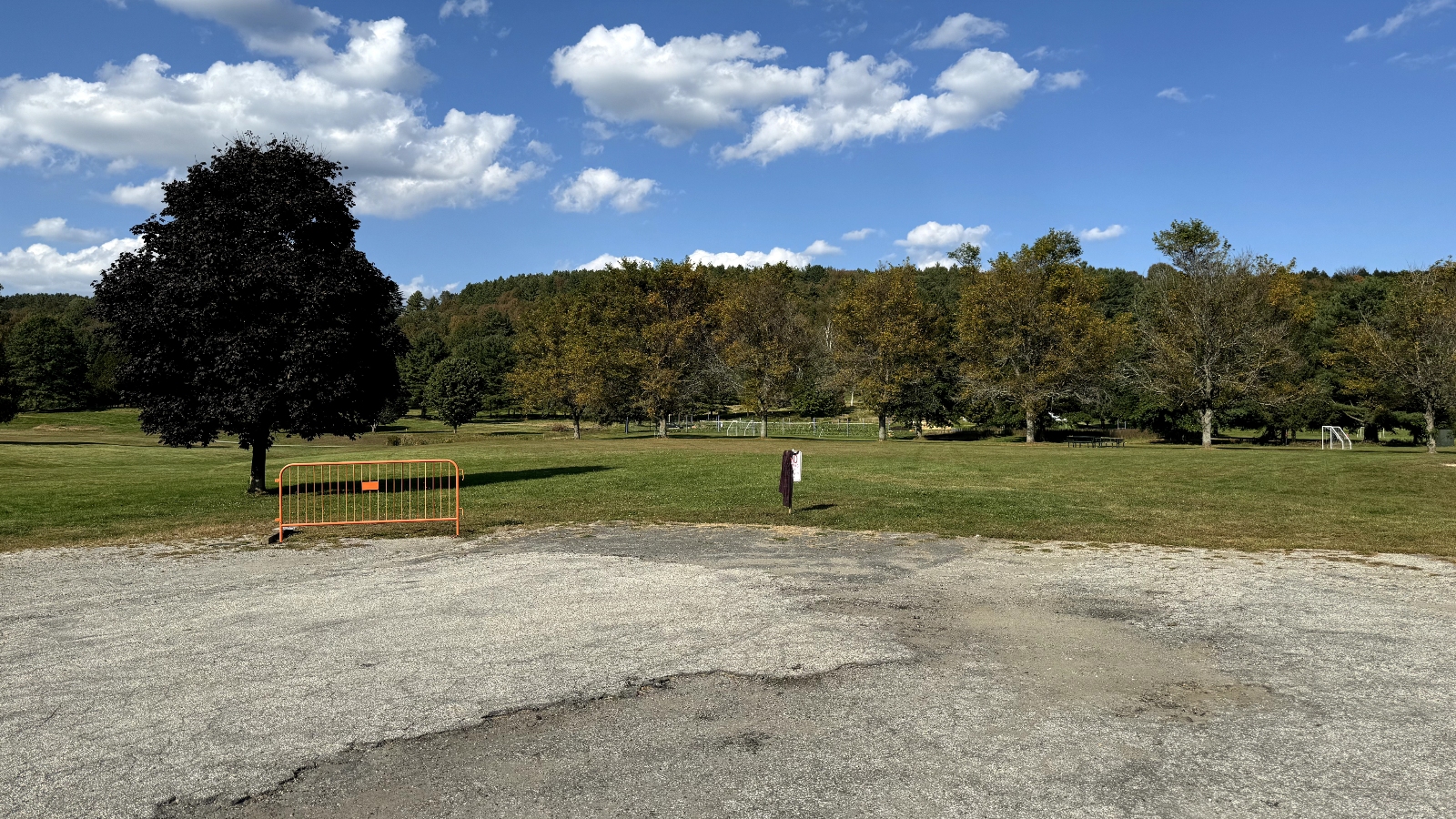

The previous Elks Membership constructing. Zoya Teirstein / Grist
The previous Elks Membership is situated only a few miles from downtown, however it’s a world away in elevation, situated on the high of a hill that’s by no means been touched by flooding. The goal is to finally construct roughly 300 models of housing on the location, which might considerably alleviate the housing scarcity in Montpelier. However there are a variety of hurdles to beat earlier than town can break floor. The property nonetheless wants sewage, water, and electrical energy traces put in. It wants a highway with two exit factors, per Vermont state regulation. It additionally wants a developer on board to cowl many of the upfront prices of constructing. The town has $500,000 in FEMA funds to make use of, left over from 2023, however that’s a drop within the bucket. Hierl estimates it’ll be three years earlier than town breaks floor on the undertaking, and a pair years after that earlier than the brand new housing comes in the marketplace. Nonetheless, she mentioned, the straightforward actuality is that there isn’t a one else in Montpelier dedicated to offering inexpensive housing alternatives for residents.
“In a number of the cities in Vermont which might be profitable within the improvement of latest housing models, it’s typically taken an intervention from the municipality to make it occur,” mentioned Doyle, standing in entrance of the outdated Elks Membership and looking over the acres of sloping garden that encompass it. “Some individuals don’t imagine that’s the position of presidency, serving to facilitate the event of inexpensive housing. And but, if town didn’t step in, that’s not what would’ve occurred right here.”
It’s one factor for a metropolis like Montpelier to take steps towards constructing a single inexpensive housing improvement, however it’s fairly one other to construct sufficient inexpensive, climate-resilient housing to fulfill the necessity throughout Vermont — and throughout the nation. Alex Farrell, Vermont’s high housing official and a Republican, mentioned that, whereas Vermont has made strides in changing into extra local weather resilient, he doesn’t understand how his state will handle the toll excessive climate is taking up housing throughout Vermont with out outdoors assist. “To ask states to take this on alone, it’s simply not doable,” he mentioned.
This 12 months, Consultant Alexandria Ocasio-Cortez, of New York, and Senator Tina Smith, of Minnesota, each Democrats, launched a invoice that might create a $30 billion social housing authority throughout the federal authorities geared toward financing inexpensive models throughout the U.S. The invoice pulls from inexperienced housing laws that AOC and Bernie Sanders, the left-wing senator from Vermont, launched in 2019 that might have directed billions towards making current public housing inventory local weather resilient, had it handed.
The brand new laws is a protracted shot — congressional Republicans need much less social security web spending, no more. And record-high inflation has led to a scenario during which new federal spending, usually, is more and more frowned upon by voters who will probably be casting ballots this fall. However in Vermont, the place excessive climate occasions are simply beginning to have an effect on communities, native and state officers — each Democratic and Republican — say out-of-the-box pondering is precisely what’s wanted.
“It’s not like this type of catastrophe is a one-off factor that’s actually uncommon or that we’d not see once more,” mentioned Hierl. “Our federal, our state, and our native authorities all have to be higher geared up to assist individuals by means of these difficult local weather disasters that we all know are simply going to proceed rising. We have to do higher.”





